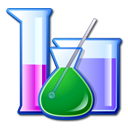A-level Applied Science/Finding out about Substances
About this Unit
[edit | edit source]From the AQA Specification:
In this unit you will learn about:
- how to take and prepare samples for analysis;
- the use of standard procedures to ensure that the results of analysis can be replicated;
- how to conduct qualitative analysis and a volumetric (quantitative) analysis;
- how a chromatographic analysis and colorimetric analysis are conducted;
- how to calculate a molar enthalpy change from experimentation and that energy changes take place during chemical reactions.
How you will be assessed
[edit | edit source]This unit is assessed through the work you complete for your portfolio.
The marking criteria are found in the AQA specification.
What you need to know
[edit | edit source]| Qualitative analysis | Volumetric analysis | Chromatography | Colorimetry | Heat of combustion |
Scenario 1: Richmond Mine Water
[edit | edit source]"The Richmond Mine of the Iron Mountain copper deposit contains some of the most acid mine waters ever reported. Values of pH have been measured as low as −3.6, combined metal concentrations as high as 200 g/liter, and sulfate concentrations as high as 760 g/liter."[1]
Molar concentrations of salts in Richmond Mine water sample.[2]
| sample | 90WA103 |
| temp | 34.8 |
| pH | 0.48 |
| Iron(II) | 0.323 |
| Aluminium | 0.041 |
| Iron (III) | 0.020 |
| Magnesium | 0.034 |
| Zinc | 0.031 |
| Sulphate salts | 0.570 |
| Sulphuric acid | 0.659 |
In the investigations which follow, you will examine a sample of water with similar composition to confirm the acid concentration and the ions present. You will use qualitative analysis, titration, colorimetry, chromatography.
References
[edit | edit source]- ↑ Nordstrom, DK and Alpers, CN (1999). "Negative pH, efflorescent mineralogy, and consequences for environmental restoration at the Iron Mountain Superfund site, California" (96(7)). Proc Natl Acad Sci USA.: 3455–3462.
{{cite journal}}: Cite journal requires|journal=(help)CS1 maint: multiple names: authors list (link) - ↑ Compositions of five extremely acid mine water samples from the Richmond Mine.




